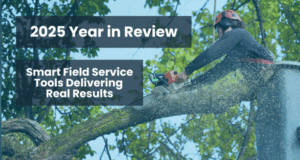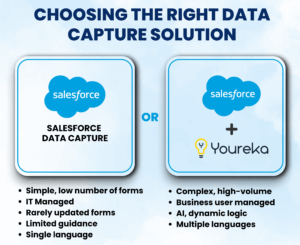
Every construction project is unique, with its own set of criteria, timelines, budget, and scope. This creates an added layer of complexity when a construction firm is managing multiple active projects and negotiating future projects as well. Dynamic digital forms provide the consistency and mobility the construction industry needs to streamline work processes, simplify planning, secure materials, manage services, and ensure compliance with regulations in alignment with client expectations.
Despite differences in the size and scope of each job, all construction projects face similar concerns. Setbacks, bottlenecks, delays — every project is vulnerable to operational challenges and pain points, which may also include:
- Inconsistent documentation
- Lack of standardization
- Communication breakdowns
- Data capture limitations or inconsistencies
- Planning obstacles
Without standardized ways to communicate, teams rely on various devices and software, handwritten notes, and word-of-mouth exchanges. With each additional communication method added to a project, the risk of missed or mixed messages and unreliable information increases. Lack of standard forms may result in front-line employees’ experimenting with disparate digital tools to gather, create, and submit documentation, resulting in a mix of patched-together solutions.
The Solution
It is not adding more communication channels. It is leveraging smart, dynamic digital forms that help construction teams gain consistency and mobility to streamline and optimize operations.
Consistency and mobility
It should come as no surprise that there is an inherent challenge in using competing, disparate systems. Data is often siloed and restricted to an individual project rather than funneled to field service management teams, the back office, and decision-makers who need greater visibility and transparency across the entire book of business. As a result, teams experience reduced productivity, a great disadvantage in today’s busy construction landscape.
Investment in agile, mobile technology is a crucial step to overcoming these roadblocks. Consistency combined with mobility, field teams can access this information and relay feedback at the point of need, ensuring seamless communication and data transfer which leads to a streamlined operation.
Form factor
Increased mobility can be achieved by leveraging a dynamic digital form management system. With this approach, information from the field will easily and consistently reach decision-makers, providing key insights to inform project planning and operations. The availability of consistent, mobile forms can increase the effectiveness of construction project management in a variety of ways, such as:
Planning. Detailed and strategic planning is critical to the success of any construction project. As the complexity of a project increases, so does the importance of a detailed, strategic project plan to ensure a successful outcome. The form factor — mobile forms available online and offline offer consistency to everyone on the project — ensures the team stays on track, from corporate management and site managers to special project runners.
Monitoring progress and managing change. Real-time progress reports, budget plans, and short- and long-term scheduling involves reviewing a large volume of data and consolidating that information for better forecasting and change management. Mobile forms, used consistently, provide the data site managers need to make decisions, solve problems, and identify issues or expected delays.
Communication. Misunderstandings and incomplete information can negatively impact your construction project, fast. Mobile technology allows real-time communication and data sharing for better team collaboration and optimal results. The form factor allows everyone to work from the same plan, even when that plan requires frequent updates.
Closing the loop
Every business can benefit from more advanced technology, consistency, and mobility. Can mobile forms really make a difference for construction companies? Short answer: yes.
1. Mobile forms begin with a unified digital experience for customers. The customer’s information is connected across every system in your business, from the front office to contractors to field service. No more lost paper forms or difficult-to-decipher hard copies of detailed information.
2. Mobile forms elevate sales performance. Collaborative, workflow-enabled selling processes, along with actionable artificial intelligence-powered insights, guided quoting capabilities, and consistent pricing allows fast, reliable performance from all members of the team.
3. Mobile forms unify revenue management and supporting processes on a single platform. Using a consistent and reliable form factor, your business can improve efficiency and reduce revenue and margin leakage.
Manage your business from opportunity to completion with mobile forms and step-by-step guided procedures. Contact Us for a demo today!




